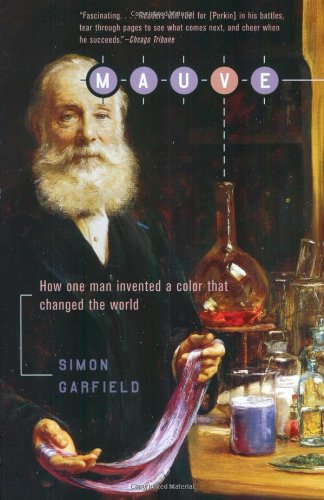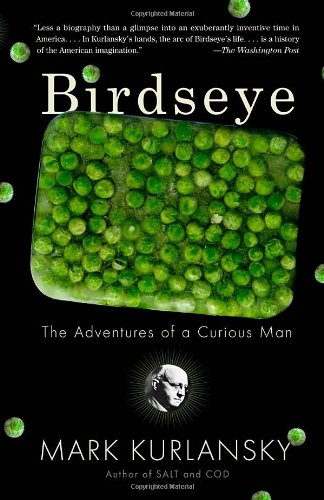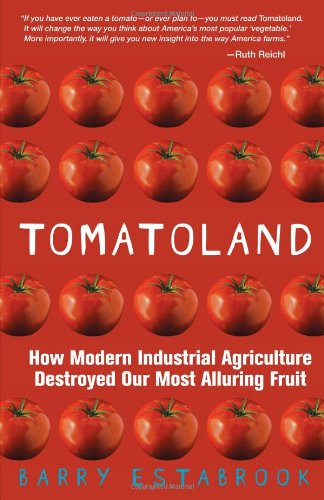Table of Contents
- Salt: A World History
- Gold: The Race for the World's Most Seductive Metal
- Diamond: A Journey to the Heart of an Obsession
- Coal: A Human History
- Mauve: How One Man Invented a Color That Changed the World
- Birdseye: The Adventures of a Curious Man
- Cod: A Biography of the Fish that Changed the World
- Tomatoland: How Modern Industrial Agriculture Destroyed Our Most Alluring Fruit
- Banana: The Fate of the Fruit That Changed the World
- Extra Virginity: The Sublime and Scandalous World of Olive Oil
- Spice: The History of a Temptation
- A History of the World in 6 Glasses
- Cotton: The Biography of a Revolutionary Fiber
I stumbled into a genre of microhistory books that trace the history a particular topic. Each of these books explores history through the lens of a single subject. It’s an interesting exercise in the influence of a material or resource through time. I’ve enjoyed seeing how our modern society has been shaped by things that we may take for granted.
For instance, the word “salary” comes from the Latin word for salt. It was so valuable that some Roman Legions were paid in salt, and it was in fact more valuable than gold at the time. The incredible need for salt and the trade routes that this established had far reaching effects that last to this day. By looking at the history of salt, we can examine a cross section of history, putting each time period into perspective. For instance, with salt we can trace the history of the industrial revolution as we develop new ways to mine, as well as international shipping and taxation. These books are fascinating in that they turn away from a generalist approach to history, and instead allow us to look at everything involving a single topic.
The links within this post are affiliate links to purchase these books. All of these are books that I’ve read, enjoyed, and have a place on my book shelf. None of these are as technical as a Petroski book, and I’d consider most of these “beach reading”. All of them have moments of “huh, that’s interesting” and I consider them to be good pop-culture touchstones.
If you do read any of these, drop me a note and let me know if you enjoyed them! You can find me on Twitter at @there4dev
Single Topic History Books

Mark Kurlansky, 2003
This is the first of this genre that I read. Salt is so common, and so overlooked, that we rarely consider its place in history. In this book, Kurlansky looks at salt as not just a culinary necessity, but as the driver of an economic engine that has shaped society. In particular, the preservation of food has been an important part of human achievement - from early exploration to living in extreme climates. This has made salt incredibly valuable, and as such, we can use the topic of salt to examine early traveling and the development of trade routes. The book is a bit meandering and leaves some of the logical conclusions up to the reader. However, overall the historical detail, fascinating anecdotes, and quality storytelling make this a great introduction to the genre.

Matthew Hart, 2014
Diamond and Gold are both written by Matthew Hart. This book travels the world from deep mines in China to the London Gold Exchange. It covers the challenges faced by the early gold miners that drove westward expansion in the United States, and the gold value fluctuations after the 2008 financial crisis. This book is written a bit like a travel book that examines the geology, geopolitics, and economics of gold.

Matthew Hart, 2002
Another globe-trotting story from Matthew Hart, this book is meticulously researched. The book covers the diamond mines of Africa and the enormously powerful De Beers cartel, and the Canadian diamond mines that are pushing their monopoly. I especially recommend this book if you aren’t familiar with the De Beers cartel and the power that they hold over the global market, and the marketing engine that they created to make diamonds valuable through vanity and greed. Hart is an industry insider, and he brings a great wealth of knowledge to the subject, and makes this an entertaining book.

Barbara Freese, 2004
This book presents the use of coal in the United Kingdom, the United States, and China. From early use as heating and cooking to modern day power plants, coal has been a cheap and transportable source of energy. It was essential in the industrial revolution for metal smelting before the modern electric kiln (which even now may still be powered by coal power plants). Coal heat and coal power has also made much of the world livable that would otherwise be inhospitable. This book is a little chatty at times, but as with others in the genre is carefully researched and presented well.

Simon Garfield, 2002
In the mid 1800s an eighteen-year-old English chemist accidentally discovered the worlds first synthetic dye. This aniline purple dye, called Mauve, was a big deal in organic chemistry research. It opened the doors for organic chemistry to be viewed as a profitable industry, and pushed the debate of pure versus applied science. Before this discovery all dyes were organic and based on bark or plant extracts. This opened the door for thousands of new color compounds and brought chemistry research to the forefront of technology at the time. An interesting note is that it was made from coal tar - but that’s another book! While not as far ranging as some of the other books on the list, it’s a fascinating story of invention and the birth of an industry.

Mark Kurlansky, 2013
A fur trapper in Labrador, Canada, recognized that spoiled food and an unhealthy diet of dried meats was a serious problem. He noticed that fresh vegetables frozen in the cold northern winds froze quickly and in a way that kept them from turning to mush. This book tells the story of Clarence Birdseye as he develops the technology that gave birth to the modern frozen food section of the grocery store. Birdseye was a character - he had an insatiable appetite for learning and a real knack for entrepreneurship. The book is part biography and part history of frozen food.

Mark Kurlansky, 2010
This may be the strongest book from Kurlansky. What starts off as a story of Cod as a salted fish that made long distance seafaring possible turns into a dramatic warning about our current overfishing and dwindling fishing stock. This is an amazing story of the impact we’ve had on our oceans, and a grand tale of exploration and the history of this fish.

Barry Estabrook, 2012
My love of this book is a little personal - I have such fond memories of eating tomatoes off the vine at my grandparents house. In the book we travel to Peru in search of the original tomatoes, and trace how the tomato grew from a small regional fruit to a global business worth billions of dollars. This books covers the slavery conditions of Florida to the agribusiness of using modern technology to develop tomatoes that can survive long distance shipping. When you’re done with this book, you’ll look forward to planting your own tomatoes this spring and becoming something of a historian yourself.

Dan Koeppel, 2008
If you’ve ever heard the term “Banana Republic”, but haven’t had the backstory - this is the book that will explain it. It covers the rise of the banana business, the toppling of empires, and the search for the next banana. It examines the trouble that our Cavendish Banana is facing due to our nearly global monoculture of clones. This book is filled with interesting anecdotes explaining the historical and political ramifications of the banana industry.

Tom Mueller, 2013
Short version - it’s incredibly corrupt. The rise of gourmet food, the popularity of olive oil in beauty products, and the modern commodity market has put the olive oil industry under harsh pressure to produce. The industry has been deeply affected by organized crime and corruption, with adulterated oil and smuggling. The book reads like a crime novel at points, and is worth reading even if you aren’t a foodie.

Jack Turner, 2005
The history of the spice trade is in some ways the story of human exploration. Columbus was sailing in search of pepper; the history of exploration from Europe is deeply entwined with the history of spice. Empires were built on top of the spice trade. Spice was used as medicine, spice, and for religious reasons, and the demand for it took us to all the corners of the world. This book is one of the easiest to read on this list.

Tom Standage, 2006
Beer, wine, spirits, coffee, tea, and cola: the history of the world through six beverages. From the use of beer as a way to preserve drinking water to using rum as payment during seafaring voyages to the importance of coffee during the Age of Reason in Europe, these drinks have had an effect on our culture. In this book, each drink is treated as a sort of technology, and then used to explore the larger historical context around them. The book touches on modern globalization through the lens of Coca-Cola and the cultural influence that it has had. This book is full of pop-culture information, and may surely make you enjoy your next IPA just a little more.

Stephen Yafa, 2006
Said to be the most powerful cash crop in the world, cotton has a long history from early domestication almost 6000 years ago. This book looks at the economic turmoil that the cotton market has experienced as technology has changed. Yafa writes about the American Civil War and the part that cotton and cotton plantations played in that conflict, and he covers the modern driving factors of the industry including modern farming techniques and the complicated cotton trade.
Again, if you read any of these, please let me know!